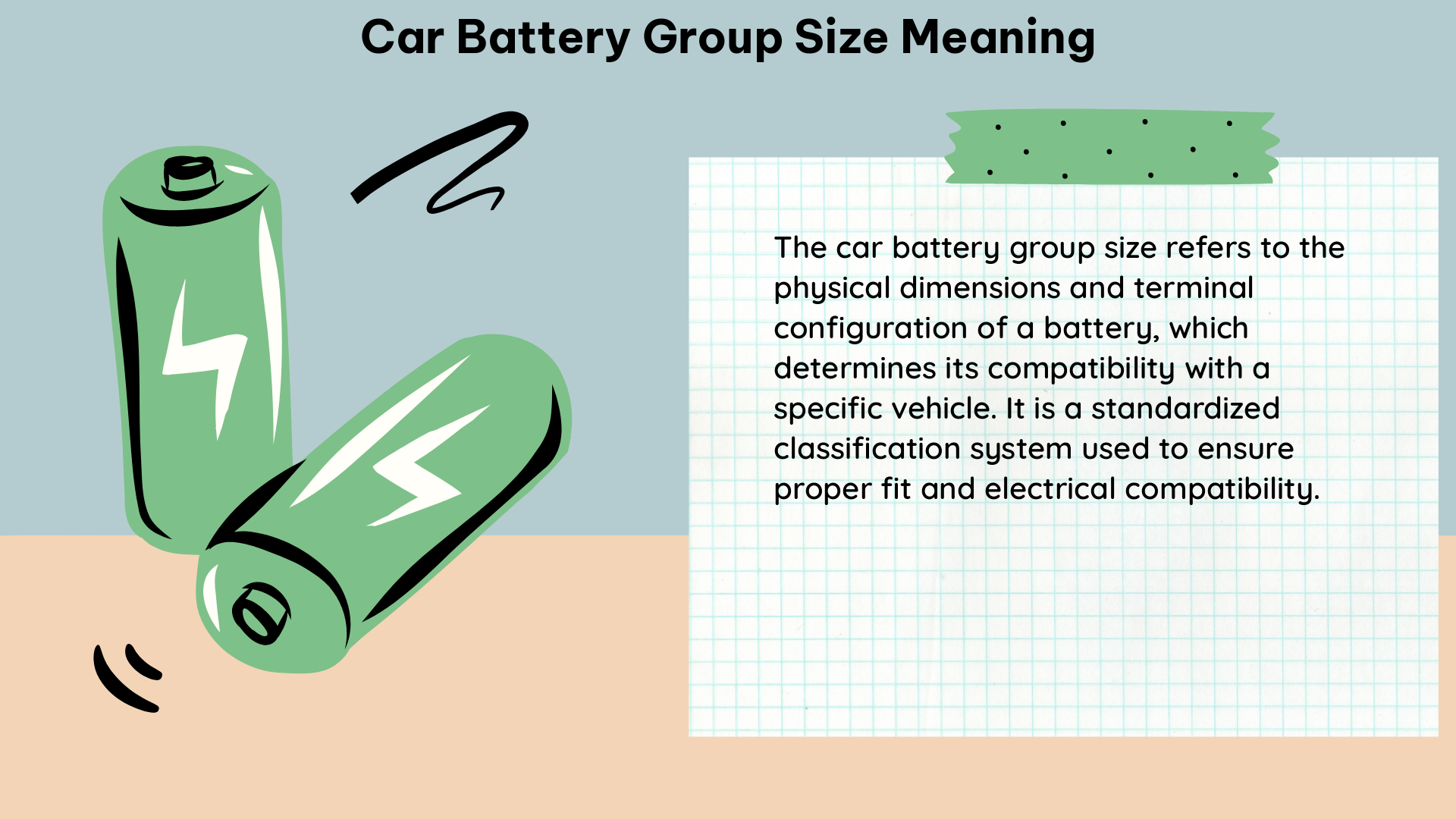The car battery group size is a critical factor in ensuring the proper fitment, performance, and compatibility of a replacement battery with a specific vehicle. It is based on the battery’s dimensions, performance, terminal arrangement, and chemistry, with letters following the group size number indicating the battery’s reserve capacity or performance parameter.
Dimensions and Fitment
The dimensions of a car battery are a crucial aspect of the group size. The battery must fit within the designated space in the vehicle, and the dimensions must be within 2mm of the specified size to ensure proper fitment. This includes the length, width, and height of the battery. Manufacturers provide precise measurements for each group size to ensure the battery will securely fit and be held in place by the vehicle’s battery tray or hold-down system.
Performance Characteristics

The performance of a car battery is measured through two main metrics: cold cranking amps (CCA) and amp-hours (Ah). CCA is a measure of the battery’s ability to start the engine in cold weather, while Ah is a measure of the battery’s capacity to store and deliver electrical energy. The group size designation takes these performance characteristics into account, ensuring the replacement battery can provide the necessary power to start and run the vehicle’s electrical systems.
| Group Size | CCA Range | Ah Range |
|---|---|---|
| 24F | 500-650 | 50-70 |
| 35 | 650-800 | 60-80 |
| 65 | 800-950 | 70-90 |
| 75 | 950-1100 | 80-100 |
| 94R | 1100-1250 | 90-110 |
Terminal Arrangement
The terminal arrangement of a car battery is another critical factor in the group size designation. The battery terminals must align with the vehicle’s electrical cables and connections to ensure proper power transfer and prevent any issues with the electrical system. Manufacturers specify the terminal location, size, and type (top post or side post) for each group size to ensure compatibility.
Battery Chemistry
Car batteries are classified into group sizes based on their chemistry. The most common type is the lead-acid battery, which is the default chemistry for most group sizes. However, there are also designations for higher-performance variants, such as enhanced flooded batteries (EFB) and absorbed glass mat (AGM) batteries. These advanced chemistries offer improved performance, longer lifespan, and better resistance to vibration and temperature extremes.
Group Size Designations
The Battery Council International (BCI) assigns numbers and letters to each battery group size to ensure proper fitment and compatibility. The number represents the physical dimensions of the battery, while the letters indicate the battery’s reserve capacity or performance parameter.
For example, a Group 75N battery has the following characteristics:
– Group 75: Dimensions of approximately 10.25 x 6.81 x 7.68 inches
– “N”: Indicates a reserve capacity of 95 minutes at 25 amps
In contrast, a Group 75C battery has the same physical dimensions but a lower reserve capacity of 25 minutes at 25 amps.
Choosing the Right Battery
When replacing a car battery, it’s essential to match the group size to the vehicle’s specifications. Consult the owner’s manual or a replacement guide to determine the correct group size for your vehicle. Pay attention to the dimensions, performance, terminal arrangement, and chemistry to ensure the new battery is a perfect fit and will provide the necessary power and longevity.
Conclusion
The car battery group size is a complex but critical factor in ensuring the proper fitment and performance of a replacement battery. By understanding the dimensions, performance characteristics, terminal arrangement, and chemistry that define each group size, you can make an informed decision and select the right battery for your vehicle. This knowledge will help you maintain the health and reliability of your car’s electrical system.
References:
- BCI Group Sizes | Battery Council International
- Battery Group Size – Autobatteries.com
- Battery group size – LETTER meaning – Maintenance/Repairs – Community.cartalk.com
- Battery Group Size: What It Is and Why It Matters – Capital One
- What do battery group numbers mean? – ClassicOldsmobile.com

The lambdageeks.com Core SME Team is a group of experienced subject matter experts from diverse scientific and technical fields including Physics, Chemistry, Technology,Electronics & Electrical Engineering, Automotive, Mechanical Engineering. Our team collaborates to create high-quality, well-researched articles on a wide range of science and technology topics for the lambdageeks.com website.
All Our Senior SME are having more than 7 Years of experience in the respective fields . They are either Working Industry Professionals or assocaited With different Universities. Refer Our Authors Page to get to know About our Core SMEs.